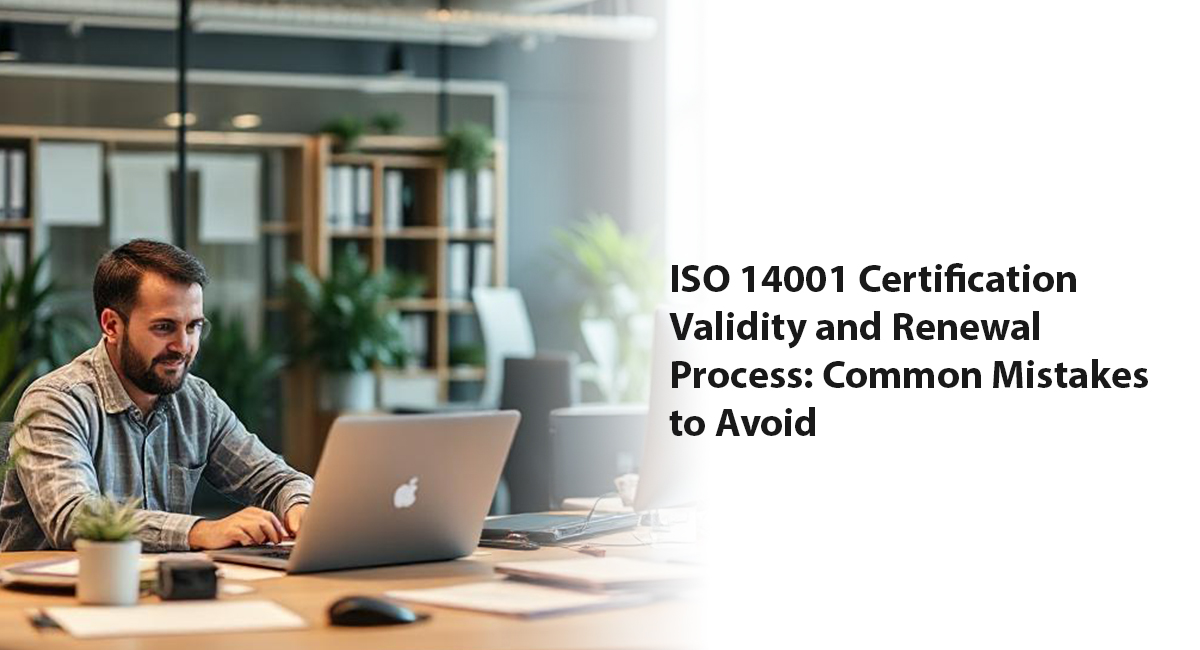We are changing our name from Blue Wolf to QIC Global
We are changing our name from Blue Wolf to QIC Global

Published on: September 25, 2025
Updated on: October 7, 2025
Businesses all over the world have become environmentally conscious. Companies are turning to the international environmental management system (EMS) standards ISO 14001 to show that they are responsible in their operations. Certification is just the start of the journey though. To comply with the ISO 14001 certification, to remain credible, and to keep enjoying the fruits of certification, it is imperative to understand the ISO 14001 certification validity and renewal process.
The ISO 14001 is certified on a three-year basis and the organization needs to be certified again through the renewal audit process in order to retain the certification. During these years an audit on surveillance is held yearly to ensure continued compliance. Although much needed, organizations are known to commit preventable errors during the renewal process causing delays, unnecessary expenses or even suspension of certification. We will discuss the pitfalls and ways of avoiding them.
The mistake of not monitoring the certification validity period is one of the most common mistakes made by a business. The lifetime of ISO 14001 certificates is usually three years; however, most organizations believe that once certified there is no need to take action immediately until the last day. This results in hurried preparations and avoidable non-conformities in the process of auditing.
It is important to keep a clear calendar of certification end dates to ensure that organizations are fully ready to undergo a surveillance audit, as well as renew promptly. Regarding certification as a process and not an event contributes to avoiding the pressure of the last minute.
The foundation of good management of EMS is internal audits. Regrettably, there are those firms that carry them out in name only or even not at all because they give the responsibility to the outside auditors and expect them to perform the evaluation. This is a major mistake.
Internal audits assist in not only identifying the gaps at an early stage but also show the external auditors that the organization is actively involved in its constant improvement. Omitting them may cause some red flags in the process of renewing and stopping the certification.
ISO 14001 mandates organizations to keep up to date records of policies, objectives, and operational controls. A common mistake occurs when companies neglect to update their records after operational or environmental changes.
For example, when a company switches to renewable energy sources or installs a new waste management system, they should be recorded. The old documentation usually leads to non-compliance audit findings.
Employees are essential in practicing environmental practices. However, not all organizations train on a regular basis or involve the staff in environmental activities. This not only dilutes compliance but also diminishes the effectiveness of the EMS as a whole.
Renewal auditors usually interrogate the employees to have the sense of awareness. A situation in which members of staff cannot articulate environmental procedures or policies can lead to unfavorable results. Ongoing training keeps the workers informed, involved, and in tune with the ISO 14001 requirements.
| Common Mistake | Impact | Recommended Practice |
| Ignoring certification timelines | Risk of certification lapse | Track deadlines and prepare well in advance |
| Skipping internal audits | Gaps remain unidentified | Conduct regular, thorough internal audits |
| Outdated documentation | Non-compliance during audits | Keep EMS records updated with every change |
| Lack of employee training | Poor audit outcomes | Provide regular training and awareness sessions |
| Treating renewal as formality | Missed improvement opportunities | Approach renewal as continuous improvement |
Arguably, the greatest error that organizations commit is to consider the renewal audit to be a box-ticking exercise. Compliance is not the only goal of ISO 14001, but also the ongoing enhancement of environmental performance. A company that tries to renew with little effort fails to tap into opportunities to improve sustainability practices, reduce operational costs, and boost brand reputation.
Renewal can be used as an opportunity to analyze what has been accomplished, evaluate what needs to be improved, and create new and high expectations of how these goals can be achieved in order to be proactive. It is this attitude that turns the process of renewal into a long-term value driver.
Surveillance audits are a necessary component of the ISO 14001 certification. These audits are held every year throughout the three-year validity period to ensure that an organization is ultimately complying with the environmental management standards. Most companies do not consciously take them into account and only pay attention to the final renewal audit, which is a mistake. The surveillance audit not only serves to detect the gaps early on but also contributes to the seamless preparation of the renewal process. Viewing them as continuous enhancement opportunities will keep organizations on course, avoid surprises in the renewal audit, and help establish a culture of environmental responsibility.
The ISO 14001 certification validity and renewal process is essential in ensuring compliance, credibility, and improvement continuity in environmental performance. Simple missteps like forgetting about internal audits, not paying attention to the schedule, or neglecting the awareness of employees can cause delays that are fully preventable when done in the right way. Organizations can achieve smooth sailing by looking ahead, updating documentation, viewing renewal as a growth opportunity, and so on. In an effort to ensure that businesses remain certified and enhance their environmental performance, QIC Global can offer valuable guidance to businesses that are in need of professional assistance to navigate the ISO 14001 renewal process.

Why is ISO 14001 Certification for Construction Companies Necessary for Sustainable Growth?

Top Benefits of ISO 14001 Certification for Manufacturing Companies in Today’s Market

Is ISO 14001 for small companies necessary? How beneficial is the certification?

How to get iso 14001 certification when carbon footprint is too high? What are the benefits?